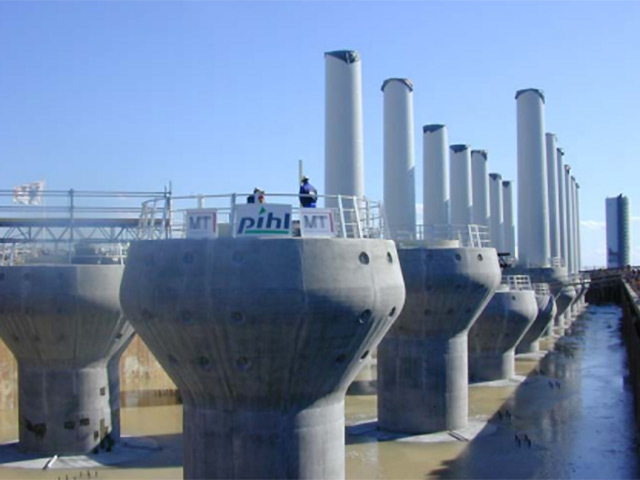
Concrete gravity turbine foundations being developed for offshore windfarms have a smaller carbon footprint than their steel equivalents, according to a new study.
Arup, Vinci Construction and The Concrete Centre say the study is preliminary and was commissioned by the so-called “Interest Group for Concrete Gravity Base Foundations”.
The priority was to estimate the carbon footprint of the raw materials and other resources to be used in the construction of a concrete gravity foundation (CGF) to support a 5MW turbine in 42m deep water.
Also taken into account were:
- Transportation of materials to a manufacturing/construction facility
- Resources used in the construction of the manufacturing facility
- Resources used in the manufacture of any bespoke vessels used for installation
- Resources used during installation of the foundations
- Resources used during maintenance of the foundations
- Resources used during deconstruction of the foundations.
The study only considered the CGF; it did not consider the other parts of the offshore windfarm: such as the turbine blades, nacelle, tower, cables, substations and so-on.
A number of assumptions were made in order to ensure that carbon footprint estimates for different concrete foundation solutions would be comparable. The following assumptions were made:
- Average road distance for transport of materials to the manufacturing facility of 160km
- Average distance from port to offshore wind site of 50km
- Manufacturing facility to build a batch of 200 units at a rate of 50 per year (This is a low figure; facilities are expected to produce a minimum of 100 per year and to manufacture in excess of seven years, hence the CO2e per unit will be less and this study will give an over-estimate)
- For installation, five units per visit for ballasting, scour & seabed preparation (where required)
- Maintenance visits numbering eight in a 25-year lifetime with four units visited in each trip (once again this is a very onerous schedule for such a durable solution)
- Deconstruction included both removal and breaking up the units.
The “foundation only” results for six different CGF solutions was estimated to be 1,190 tonnes of CO2 per 5MW unit (with a range of 708-1,597 tonnes CO2 per 5MW unit).
This compared with an estimated carbon footprint for a steel jacket solution of 2,770 tonnes of CO2 per 5MW unit.
Combining all the resources used in the manufacture, installation, maintenance and deconstruction of concrete foundations gave an estimated average carbon footprint for four different concrete gravity foundation solutions of 2,480 tonnes CO2 per 5MW unit.
The basic conclusion of this preliminary study is that concrete solutions are not likely to be any worse than a steel jacket solution in terms of its carbon footprint. Indeed, concrete solutions “appear to have a significantly lower carbon footprint compared with a steel jacket”.
Recommended for you
